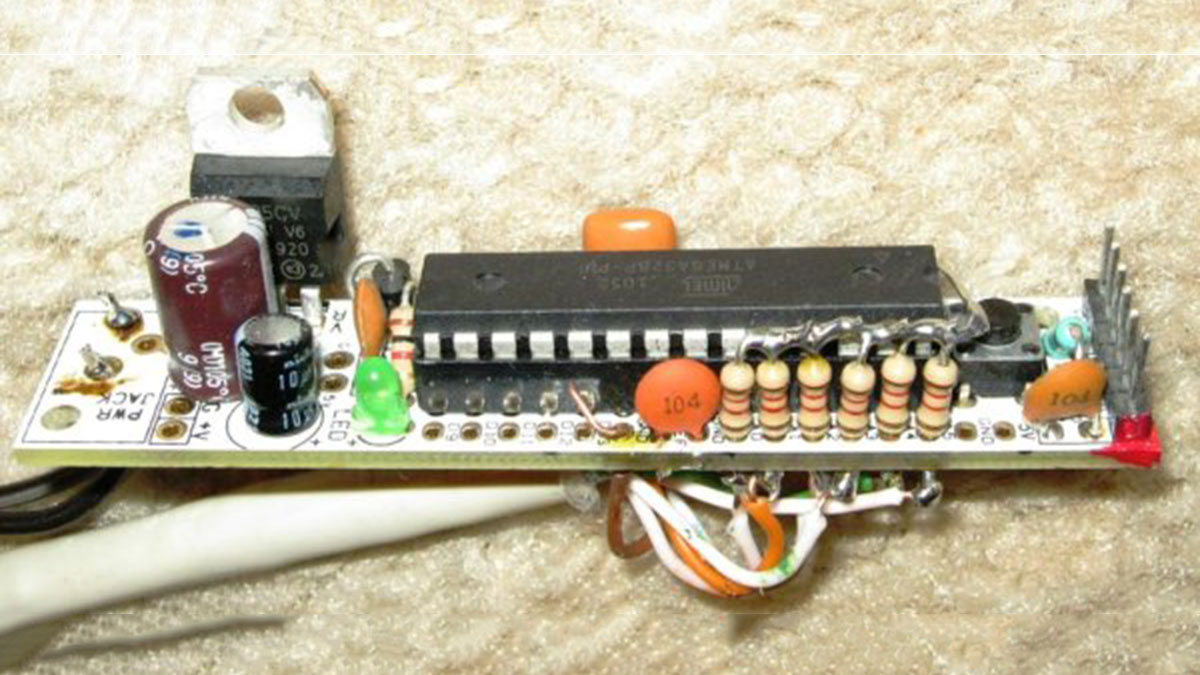Most of you have heard the expression ‘Hot Air Rises’. Well, it’s true.
So in your typical house, it’s going to be hotter near the ceiling than near the floor. How much hotter?
Well, being a Lazy Old Geek, I wanted to know how much. Well, that’s easy, I just point my IR thermometer (See picture) up in the corner and down at the floor. Okay, it reads 82 F at the ceiling and 75 F on the floor. All done.
But wait a minute. This is during a sunny warm day. What about when the A/C is on? What about when the heater is on during the winter? This calls for an Arduino!

Step 2: Sensor Design
So here’s my physical/mechanical plan. I decided to use some KTY81-250 temperature sensors to measure temperatures from the ceiling to the floor. My ceiling is about nine feet tall. The basic Arduino is limited to six analog inputs so I decided on six sensors. So I spaced the sensors about 1.8 feet apart.
Ethernet cable has eight wires in it. The KTY81-250s are two wire sensors but one can be ground so I used six wires for the sensors and two for ground. So I hacked it up as follows:
Here’s the color code scheme, I selected:
| Sensor | RJ45 | Common |
5 | Brn/Wht | Brown |
4 | Grn | Brown |
3 | Grn/Wht | Brown |
2 | Blu/Wht | Blue |
1 | Org | Blue |
0 | Org/Wht | Blue |
For the sensor on the top, I just stripped back the wires and solder the first KTY81 to the Brn/Wht and Brown wires. It doesn’t matter which lead goes to which. I used hot glue to insulate and support the leads.
The pictures show how I spliced in the other KTY81 sensors.
First I marked the cable approximately every 1.8 feet for the sensor locations with a Sharpie. Using a utility knife I carefully cut about an inch on each side of the mark. Carefully cut along the insulation and remove it.
In my cable there is some nylon braiding for strength. (See picture) I just cut it away. There is also some blue colored aluminum foil for noise reduction. This is not a concern in this application so just peel it away.
Now you should see the wires plus another bare wire that is for strength and grounding. (See picture) The wires are in twisted pairs. Find the two colors for this sensor and try to separate them to give you some access. Now, carefully remove the insulation on these two wires. Try to keep the cuts a little separated from each other so they can’t short together.
Solder on the KTY81 sensor as shown.
I used hot glue to insulate and support the sensors and to add strength to the cable.
Repeat the process for the other sensors.
Parts List
1 Arduino RBBB $10
Arduino USB $5
http://www.instructables.com/id/Arduino-USB/
6 KTY81-250 Temperature sensors $0.45@ Mouser.com
6 1.2K resistors $0.01@ Taydaelectronics.com
25ft Ethernet cable $3.48 ebay.com
10ft ½” PVC $2.70 Home Depot
Well, I had an Arduino RBBB lying around. See picture.
And I recently bought a bunch of KTY81-250 temperature sensors. See picture. I bought these because they were cheap and two leads only. I also had a 25 foot Ethernet cable lying around.
Total cost is around $23.
